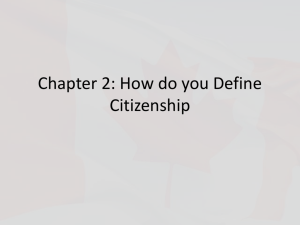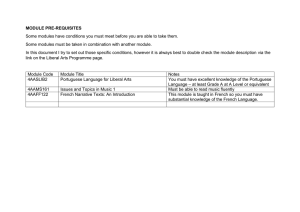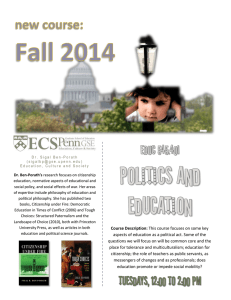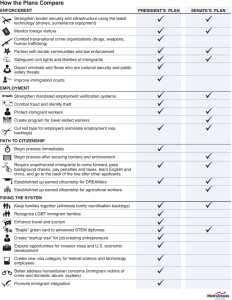Irene Bloemraad Canada
advertisement
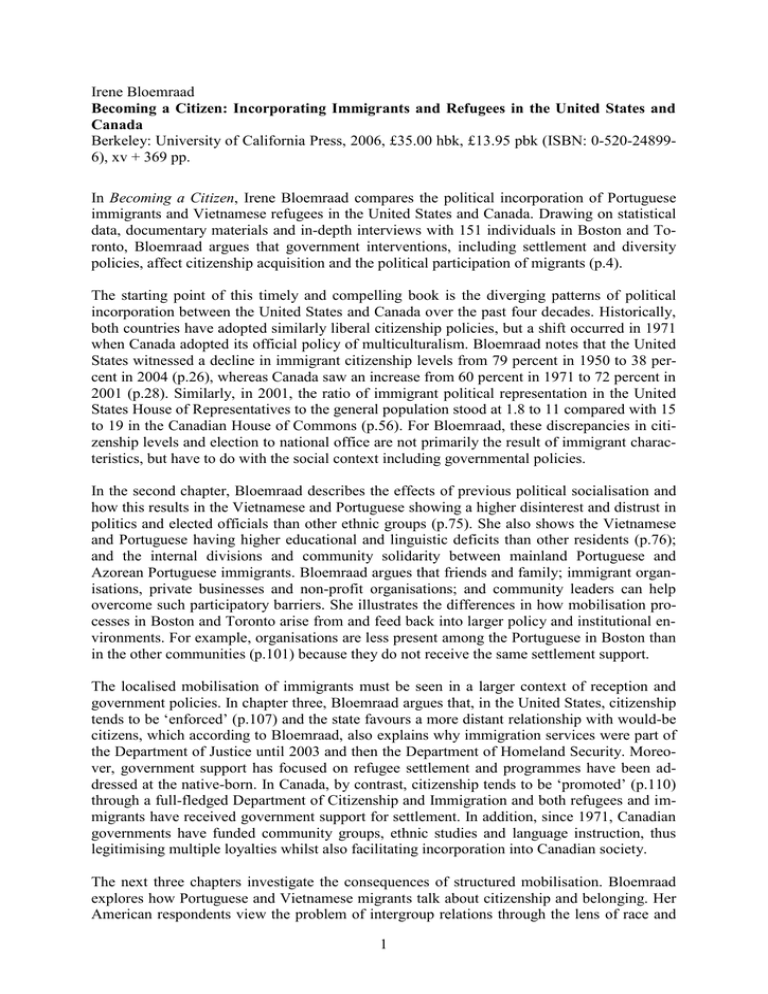
Irene Bloemraad Becoming a Citizen: Incorporating Immigrants and Refugees in the United States and Canada Berkeley: University of California Press, 2006, £35.00 hbk, £13.95 pbk (ISBN: 0-520-248996), xv + 369 pp. In Becoming a Citizen, Irene Bloemraad compares the political incorporation of Portuguese immigrants and Vietnamese refugees in the United States and Canada. Drawing on statistical data, documentary materials and in-depth interviews with 151 individuals in Boston and Toronto, Bloemraad argues that government interventions, including settlement and diversity policies, affect citizenship acquisition and the political participation of migrants (p.4). The starting point of this timely and compelling book is the diverging patterns of political incorporation between the United States and Canada over the past four decades. Historically, both countries have adopted similarly liberal citizenship policies, but a shift occurred in 1971 when Canada adopted its official policy of multiculturalism. Bloemraad notes that the United States witnessed a decline in immigrant citizenship levels from 79 percent in 1950 to 38 percent in 2004 (p.26), whereas Canada saw an increase from 60 percent in 1971 to 72 percent in 2001 (p.28). Similarly, in 2001, the ratio of immigrant political representation in the United States House of Representatives to the general population stood at 1.8 to 11 compared with 15 to 19 in the Canadian House of Commons (p.56). For Bloemraad, these discrepancies in citizenship levels and election to national office are not primarily the result of immigrant characteristics, but have to do with the social context including governmental policies. In the second chapter, Bloemraad describes the effects of previous political socialisation and how this results in the Vietnamese and Portuguese showing a higher disinterest and distrust in politics and elected officials than other ethnic groups (p.75). She also shows the Vietnamese and Portuguese having higher educational and linguistic deficits than other residents (p.76); and the internal divisions and community solidarity between mainland Portuguese and Azorean Portuguese immigrants. Bloemraad argues that friends and family; immigrant organisations, private businesses and non-profit organisations; and community leaders can help overcome such participatory barriers. She illustrates the differences in how mobilisation processes in Boston and Toronto arise from and feed back into larger policy and institutional environments. For example, organisations are less present among the Portuguese in Boston than in the other communities (p.101) because they do not receive the same settlement support. The localised mobilisation of immigrants must be seen in a larger context of reception and government policies. In chapter three, Bloemraad argues that, in the United States, citizenship tends to be ‘enforced’ (p.107) and the state favours a more distant relationship with would-be citizens, which according to Bloemraad, also explains why immigration services were part of the Department of Justice until 2003 and then the Department of Homeland Security. Moreover, government support has focused on refugee settlement and programmes have been addressed at the native-born. In Canada, by contrast, citizenship tends to be ‘promoted’ (p.110) through a full-fledged Department of Citizenship and Immigration and both refugees and immigrants have received government support for settlement. In addition, since 1971, Canadian governments have funded community groups, ethnic studies and language instruction, thus legitimising multiple loyalties whilst also facilitating incorporation into Canadian society. The next three chapters investigate the consequences of structured mobilisation. Bloemraad explores how Portuguese and Vietnamese migrants talk about citizenship and belonging. Her American respondents view the problem of intergroup relations through the lens of race and 1 reject the idea of race-based multiculturalism (e.g. Portuguese seen as ‘white’). In contrast, her Canadian interviewees describe barriers based on cultural markers such as language. This ethnic multiculturalism makes all minorities politically visible. Bloemraad convincingly argues that government interventions matter by showing that the Vietnamese communities are quite similar in Boston and Toronto (32 to 40) in organisational capacity due to US refugee settlement support, but that the Portuguese in Toronto have many more organisations than those in Boston (98 to 16) due to more government funding despite similar numbers of Portuguese (87,200 and 78,500) and Vietnamese (22,000 and 25,000) in both cities (p.163). ‘Canadian settlement and multiculturalism policies (...) also account for the much higher percentage of foreign-born politicians in Canada than in the United States’ (p.190). Bloemraad’s book is innovative because it departs from the North American behavioural tradition and employs a comparative perspective which is more common in Europe. Her central argument could be usefully extended to include areas such as education. Indeed, it is not just immigrant characteristics, government policies and settlement programmes that affect the integration of migrants and their identity formations, but also school dynamics including ethos and peer cultures. I would have also liked to see a more in-depth discussion of the different meanings of political multiculturalism in North America and Europe in the concluding chapter, where Bloemraad discusses the implications of her findings for European and other immigration countries. America’s race-based multiculturalism and Canada’s ethnic multiculturalism contrasts with what I would call Europe’s faith-based multiculturalism, that is to say the growing importance of religion and the presence of Muslims in contemporary Europe. This thought-provoking, methodologically ingenious and well-argued book makes an outstanding contribution to Political Sociology and the Sociology of Migration. It is highly recommended reading for students and scholars in sociology and ethnic studies. 2
